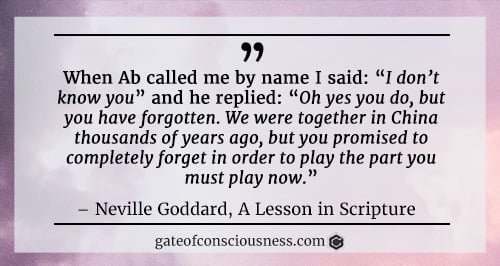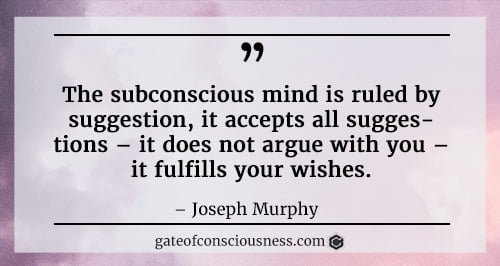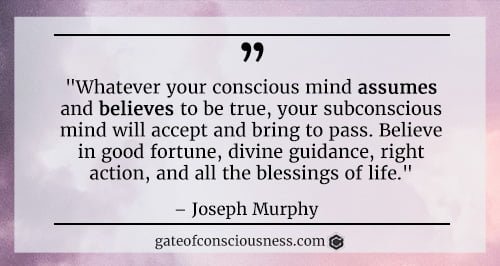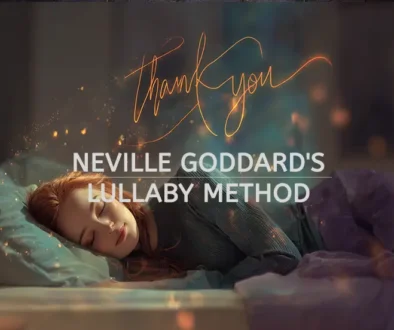Ethiopian Mystic Abdullah: Who Was the Mysterious Mentor of Neville Goddard
If you are familiar with the teachings of Neville Goddard, you may have heard of his mentor, Abdullah. Abdullah was an Ethiopian Mystic who introduced Neville to the secrets of the law of assumption in the 1930s. He was a master of manifestation and a guru who influenced many people with his wisdom and charisma. But who was Abdullah, really? And what can we learn from his teachings today?
Table of Contents:
Who Was Abdullah, the Ethiopian Mystic?
Abdullah’s life and background are shrouded in mystery. Not much information is available about him, except what Neville mentioned in his lectures.
Some sources have even questioned his existence or identity, speculating that he was a pseudonym for another teacher.
The Ethiopian Rabbi
Allegedly, Abdullah was a Rabbi from Ethiopia with a deep knowledge of spiritual laws. Born to Jewish parents in North Africa, he was raised in a strict Orthodox Jewish household. However, according to Neville, he understood more about Christianity than anyone, because he spoke Hebrew flawlessly.
Abdullah’s background in Esoteric Christianity greatly influenced his teachings.
He used Scripture to illustrate his teachings, and his lectures were incredibly powerful.
Abdullah had a profound influence on Neville’s spiritual journey from 1931 to 1936.
Defying the Norms
Neville described him as black as the ace of Spades. But, as Neville said, he never felt discriminated against, even though black people faced segregation in America during that time.
He was proud of his race and never allowed anyone to refer to him as a colored man.
But here’s the remarkable part:
Abdullah never felt the sting of discrimination. He regularly attended an Opera show in a seat where he wasn’t “supposed” to be.
Despite the societal norms of the 20s and 30s, he exuded an unshakable conviction that transcended racial barriers. He occupied that front seat without a hint of disturbance.
This tale is a testament to the incredible power of our convictions, our knowingness, to shape our reality.
His unwavering belief in his right to be there, his refusal to accept the “limitations” imposed upon him, defied the very fabric of segregation.
It’s a powerful reminder that our state holds the key.
With unyielding conviction, we can transcend any external circumstance and create a reality that aligns with our deepest desires.
How Neville Goddard Wind Up on Abdullah’s Lecture
Neville Goddard often talked about how he first met his friend Abdullah back in 1931.
So how did it happen?
It’s a fascinating story that involves a Catholic priest, a Wall Street crash, and a six-month delay.
Let me explain:
Back then, Neville was a struggling dancer and actor. He was interested in metaphysics and spirituality but had not found a satisfying philosophy. That changed when a friend of his, David, told him about an Ethiopian man who gave lectures on the Scripture and Kabbalah.
But:
Neville doubted his friend’s judgment. In his opinion, Abdullah was probably just another charlatan. After all, David had wasted his father’s fortune on Wall Street and failed to become a priest. The likelihood that he was right this time was slim.
So, for a remarkable 6 months, Neville skillfully evaded attending the lectures with David. However, one day, he ran out of excuses.
It was a Sunday evening in New York City, and David insisted that Neville come with him to the lecture.
He reluctantly agreed.
Neville entered a room where he was speaking, and when the speech was over, Abdullah came over and said: “Neville, you are six months late.”
Neville was stunned.
How did this man know his name? Neville had never seen him before! So he replied: “I am 6 months late? How do you know me?“
Abdullah explained that he and Neville Goddard had been together in China thousands of years ago, but Neville had forgotten. Basically, he implied that they know each other from their past life.

The Mentorship
Neville Goddard was so fascinated by Abdullah’s knowledge and personality that he became his student for five years.
Quote from Neville Goddard:
“If I were called upon to name a man that I would consider my teacher, I would name Abdullah.“
Abdullah taught him how to use his imagination to create his reality, regardless of any circumstances. He showed him how to:
- Imagine that he was already in the state of his desire every night before he slept (SATS).
- Assume the feeling of his desire as if it were already true.
- Act in alignment with his desire without worrying about the means or the timing.
- Trust in the intelligence and power within himself that would orchestrate everything for him.
- Persist in his assumption until it became a reality.
- Interpret the Bible as a parable of the human psyche and apply its symbolism to his own life.
- Finally, he taught him how to tap into the Creator within himself, which he called God.
Neville’s Trip to Barbados
One of the most famous stories that illustrate Abdullah’s teachings is how he helped Neville manifest his trip to Barbados.
Neville wanted to visit his family in Barbados, but he had no money for the trip. It was the year 1933, the time of the Great Depression, and Neville was unemployed.
He asked Ab for advice, and Ab told him: “You are in Barbados.” He instructed him to imagine that he was already in Barbados every night before he slept, feeling the atmosphere in Barbados.
Neville did as he was told, but nothing seemed to happen for several weeks. He became impatient and doubtful. So he went back to Abdullah several times to express his doubt.
In his unwavering wisdom, Abdullah slammed the door in his face, repeating only: “You are in Barbados.” He refused to entertain discussions about going to Barbados, for he knew that Neville must live in the end result.
Then one day, something surprising happened.
Neville received a letter from his brother. It contained an unimaginable offer—a first-class ticket to Barbados and even some money for the trip. Christmas in Barbados was about to become a reality.
And so, Neville had manifested his trip by embracing the feeling of the wish fulfilled, just as Ab had taught him. The rest, as they say, is history—an extraordinary testament to the power that lies within each of us.
Now, I’ll admit it, my storytelling skills could use a bit of sprucing up. But hey, we all have our weaknesses, right? If you’re craving a more detailed version of this story – hear it from Neville Goddard himself in this video:
What You Can Learn From Neville Goddard’s Story
This story illuminates the transformative wisdom Abdullah shared, guiding Neville to awaken his true potential and reshape his reality.
He showed Neville how to embrace the feeling of his desires as if they were already true, igniting a powerful spark within.
Abdullah’s teachings went even deeper.
He unveiled the mystical layers of the Bible, guiding Neville to see it as a profound parable of the human psyche. With this knowledge, Neville could apply its symbolic wisdom to his own life, unlocking hidden truths and insights along the way.
And there’s more!
He introduced Neville to the boundless wellspring of power and intelligence dwelling within him—the very essence he referred to as God.

Abdullah and Joseph Murphy
Abdullah had another famous student beside Neville.
Apparently, he was also Joseph Murphy’s mentor.
Yes! Joseph Murphy, the famous New Thought author and mystic who wrote The Power of Your Subconscious Mind.

How did that happen? And what did Murphy learn from these encounters?
Joseph Murphy arrived in New York City in 1922. He was interested in studying metaphysical concepts.
Allegedly, Murphy met Abdullah there.
He became Murphy’s guide, unveiling the ancient wisdom of Hebrew and Kabbalah. He shared with Murphy the secrets of harnessing the power of the subconscious to shape one’s reality.
Similarities and Differences Between Goddard’s and Murphy’s Teachings
The teachings of Murphy and Goddard converge on a fundamental truth:
They both recognize the awe-inspiring power of our mind and the profound impact of the universal laws. Their wisdom intertwines, revealing the path to manifesting our deepest desires.
Both Goddard and Murphy taught the Law of Assumption. The only difference is that Murphy called it the law of belief.
Also, they both used the Bible as a source of metaphysical wisdom and interpreted it as a psychological allegory.
Of course, if you delve deeper, you’ll uncover variations in their practical approaches.
For instance:
Murphy provides more scientific and psychological terms to explain the workings of the subconscious mind. He also uses more simple and direct language in his lectures.
Meanwhile, Goddard shifts the focus to the realm of the spiritual and mystical. Goddard uses phrases like “Isn’t it wonderful?,” and invoking transformative memories with “I remember when.“

Ethiopian Mystic Abdullah: Conclusion
So, think about this for a moment:
Two remarkable thinkers, Goddard and Murphy, both indebted to the enigmatic wisdom of Abdullah, each setting off on their own remarkable journeys to illuminate the world with their profound teachings.
These teachings are timeless and universal. They are based on the premise that we are all God individualized as ourselves.
We create our own reality with our thoughts and feelings. Nothing is impossible for us if we believe it is possible.
What we want is already ours if we claim it as ours.
These teachings can be applied by anyone who wants to manifest something they want.
With the understanding of these teachings, you possess the key to unlock a future filled with wonder and marvels beyond your wildest dreams.






Who Was Neville Goddard Really? The Life and Teachings of a Manifestation Master | Gate of Consciousness
October 21, 2024 @ 12:53 pm
[…] 1931, Neville met Abdullah, an Ethiopian Jewish mystic who would become his spiritual mentor. This encounter was like throwing gasoline on the spiritual […]